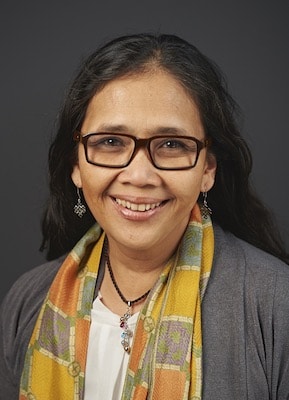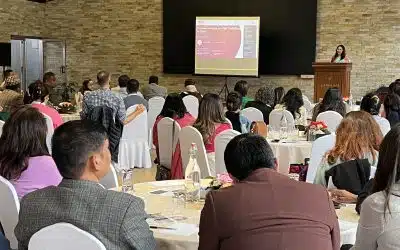InAsia
Insights and Analysis
2020 in Asia: A 20/20 Look
January 8, 2020
Afghanistan weighs peace talks with the Taliban as China’s president Xi Jinping wrestles with environmental challenges, poverty reduction, and financial risks. India faces deepening social and political polarization that threatens social cohesion, while Myanmar must address international legal action over the Rohingya crisis. As we enter the third decade of the new millennium, Asia faces both challenges and opportunities. To herald the arrival of 2020, our country representatives in 18 Asian countries survey this dynamic landscape.
—John Rieger, editor, InAsia
Afghanistan
Afghanistan enters the new year in a race against the clock to achieve a durable peace, a sustainable economy, and a secure and transparent political process. The still-disputed presidential election of 2019, continuing insecurity, uncertainties surrounding intra-Afghan peace talks with the Taliban, and a weakening economy have set the tone for 2020.
Afghanistan’s domestic revenue growth remains insignificant, and a peace agreement that ends the foreign presence in the country will require substantial monetary support from the international community to prevent a disastrous reversal into extreme poverty and renewed conflict. Time is of the essence, and government and political groups must come together to take ownership of the country’s political and economic issues and find a consensus on the way forward before the support of the international community wanes. Transforming these challenges into opportunities will be the finish line that Afghanistan must cross.
Bangladesh
Moving on from the general election, Bangladesh is heading into 2020 with a continued focus on economic growth. We are expecting an opening of space for self-reflection and a growing number of dialogues on economic development policies in the coming year.
Bangladesh will have some tough choices to make when it comes to its current trade policy. An unprecedented 65 percent of the population is of working age, between 15 and 64, and the diversification of exports beyond garment products is a must for the nation to reap the full benefits of this “demographic dividend.” Promoting competitiveness and encouraging more foreign direct investment will be key pieces of this development puzzle. Also urgently needed is an assessment of the capacity of its labor force to enter the next phase of development. The desire to graduate to middle-income status will be on full display.
Cambodia
With an increase in the national budget of 22.7 percent over last year, Cambodia’s government is demonstrating its focus in 2020 on accelerating development and improving public services. The potential withdrawal of the “Everything but Arms” preferential trade agreement by the EU, Cambodia’s second-largest trading partner, may adversely affect the garment and apparel industry, which employs over 700,000 Cambodians, the great majority of them women.
Cambodia will host the 13th Asia-Europe Meeting in November, a gathering of 53 nations on the theme “Strengthening Multilateralism for Shared Growth” and an opportunity for Cambodia to showcase its commitment to peace and security within a rules-based order. Cambodian citizens, particularly youth, will continue to look to technology for innovative solutions to problems in their local communities. Moving forward, Cambodia needs more evidence-informed policies to address societal challenges and prepare to meet its goal of becoming an upper-middle-income country by 2030.
China
The year 2020, the beginning of a new decade, will be fraught with challenges for China. President Xi Jinping has identified “three tough battles” ahead: targeted poverty reduction, effective control of financial risks, and improvement in the environment. According to Xi, by the centenary of the founding of the Communist Party of China in 2021, the country needs to have become a “moderately prosperous society.” China’s policymakers face tough political choices and will have to plow ahead with painful economic reforms in order to achieve that target.
Meanwhile, China’s relationship with the rest of the world is changing. Tension with the United States is unlikely to ease. In the midst of heightened competition between the two countries, especially here in Asia, China is confronted with the formidable (if not impossible) challenge of presenting itself as a benign partner for development and “shared prosperity,” not a hegemonic threat, to its Asian neighbors.
India
2019 was a globally tumultuous year, and India was not unscathed. The 2019 general elections to the 17th Lok Sabha, the lower house of parliament, reaffirmed the Indian electorate’s faith in the BJP and its political allies in the National Democratic Alliance. There was an expectation that continuity in government would provide some much-needed impetus for economic growth and stability. However, events have not unfolded quite as expected.
On the economic front, India is going through a challenging phase, with the annual growth rate predicated to be as low as a 4.5 percent. High unemployment and a slowdown in the rural agricultural sector are depressing consumption across the country and further exacerbating the economic downturn.
The government is trying to respond to these challenges with policies and programs to stimulate economic growth and generate employment and income. The National Infrastructure Pipeline (NIP), with projects worth USD 14.2 billion, will provide that stimulus if implemented properly, but it will require commitment and buy-in from state governments and investment from the private sector. The NIP could produce an unprecedented transformation of India’s urban and rural spaces if it were rolled out in a timely manner as planned. On the flip side, failure to follow through could spark inflation and further erode the economy.
Even as India grapples with these economic challenges, deepening social and political polarization across the country is threating the nation’s democratic principles and social cohesion. Rising tensions in the face of an economic slowdown could seriously undermine key economic and social institutions, which would be hard to restore. All stakeholders will do well to remember that social and economic well-being are deeply intertwined with the principles of equity, trust, and inclusion. India needs to keep these values in focus if it wants to realize its dream of becoming a global economic and social leader.
Indonesia
The huge wave that was Indonesia’s 2019 election has now receded, leaving fault lines clearly inscribed on her shores. As ethnic groups have coalesced into voting blocks and political divisions have begun to follow religious lines, this multiethnic archipelago, the world’s third-largest democracy, is facing some challenges. The election was peaceful and swift. It was a success. But as the people spoke, a new picture of Indonesia came into view, and democratic advocates are rightfully concerned that the deeper foundations of democracy that make elections possible are at risk.
Strengthening the common imagination of Indonesia as a democratic community is a priority. There is an outward consensus that the vigorous competition of ideas should be celebrated, but as that competition has drifted towards the politics of ethnic and religious identity, the matter at hand is not so simple. Indonesia will have to find a more nuanced approach to the increasing conservatism in some quarters; it cannot simply frame the problem as combating radicalism. Striking the right balance between freedom of expression and limitation of rights will be a challenge as Indonesia enters the new year.
Korea
With increasing uncertainties in the political, security, economic, and social arenas, 2020 is likely to be a highly consequential year for South Korea. The April parliamentary election is expected to serve as a referendum on President Moon Jae-In. With four out of five years of the Moon administration having run their course, the country faces many formidable challenges and a few opportunities.
First, national security. As the momentum of U.S.–North Korea nuclear talks has waned, deep fissures have begun to emerge between Washington and Seoul. Even if a military cost-sharing agreement can be reached, U.S.–South Korea bilateral relations will remain under stress, with far-reaching consequences that include rising anti-American sentiment in Seoul. In the North, without a long-elusive breakthrough in negotiations, Pyongyang is likely to further embrace self-sufficiency while becoming more aligned with China.
Second is the challenge of declining competitiveness and economic growth. The trade dispute with Japan has undermined an already anemic economy, stifling exports and GDP growth. More significantly, the sources of long-term growth remain fundamentally unchanged—the nation is still highly dependent on one product (semiconductors), one export market (China), and one or two major companies (primarily Samsung). The response of the Moon administration’s economic team—mainly subsidies and regulations—may provide a short-term “sugar rush,” but at the expense of long-term fundamentals. The gradual maturation of Korea’s relatively new high-tech companies provides a glimmer of hope, with Naver Corporation, known for its dominant search engine and other new-economy services, for the first time entering the ranks of Korea’s most valuable companies.
South Korea’s new pivot to Southeast Asia and India, through its new Southern Policy, may begin to shift the focus of business and foreign policy away from China. And Korean soft power, including entertainment and cultural products, remains significant in Asia and beyond. But the South Korean model of success faces two existential challenges: inequality and demographics. With unemployment rates that are twice the national average, Korean youth are increasingly pessimistic about their future. South Korea also consistently ranks at the bottom of indices related to women’s participation in the economy and society. Korea’s birth rate is lower even than Japan’s, elementary school enrollment has fallen from 4 million to 2.7 million in three decades, and thousands of schools have closed. Critical decisions must be made if Korea is to bend the arc of history, which is trending increasingly downward.
Laos
2020 will close out a decade of infrastructure planning meant to make Lao P.D.R. both “land linked” and the “battery” of Southeast Asia. As the country now shifts from planning to building, 2020 will see the completion of the Lao-China railway project, progress on major roads, and the beginning of an east-west railway corridor to Vietnam and its seaports. Two major hydropower dams, Xayaburi and Don Sahong, have now come online on the Mekong River, two more are moving through planning, and 37 other dams, on tributaries feeding the Mekong, are under construction.
As the cost of renewable energy continues to fall, however, Laos may have to adapt its hydropower plans to remain competitive in the coming decade. Look for a new five-year National Socioeconomic Development Plan (2021–2025) that will seek to balance current infrastructure plans with environmental protections and more inclusive green growth through enhanced watershed management and connecting rural areas and micro and small entrepreneurs to the increasingly well-funded economic corridors.
Malaysia
Almost halfway through its first term, the new government of Malaysia showed admirable courage in 2019 in addressing the nation’s need for reform. As it enters the new year, Malaysia is concentrating on laying the foundations for its vision of shared prosperity by 2030. The year 2020 will certainly see a doubling of the government’s efforts to manage its fiscal imbalances and create economic opportunities for growth. At the same time, Malaysia will make its mark in the international arena by hosting the Asia-Pacific Economic Cooperation summit, for which it has taken as its theme “Optimizing Human Potential towards a Future of Shared Prosperity.” With many social and political reform initiatives in progress and economic remodeling in sight, Malaysia is focused on achieving further political and economic stability in 2020.
Mongolia
Mongolia heads into 2020 with all eyes on the critical parliamentary elections coming in June. Prime Minister Khurelsukh ended 2019 buoyed by the completion of significant constitutional amendments and some success reducing air pollution in the capital of Ulaanbaatar. But with public sentiment suggesting that antiestablishment and anticorruption narratives will dominate the election season, a closely contested vote with potential gains for smaller parties seems likely. Much will depend on the turnout of Mongolian youth, who have been increasingly disengaged in recent election cycles.
Despite two years of steady if unspectacular GDP growth and the mostly successful completion of an IMF Extended Fund Facility program, the investment climate in Mongolia remains uncertain. Observers of the coming elections will be watching the economic visions of the major parties and candidates with great interest to see what direction the new government may take to spur economic growth and further reduce poverty.
Mongolia enters the new year with many reasons for optimism, and if the election cycle produces sound policy debate on the future of the country and a clear mandate for the next government, the country may be able to move past the political and policy instability that has hindered its progress in recent years.
Myanmar
2019 was a year of ongoing challenges for Myanmar, but also one of successful reforms and much anticipation of elections coming in 2020. The Rohingya crisis has continued to dominate international perceptions of the country, and international legal challenges have been proliferating. Most notably, the International Court of Justice heard Aung San Suu Kyi in December contest accusations against her country of genocide.
While the court proceedings are underway, nearly all Rohingya who left in 2017 remain in Bangladesh. Within Rakhine, violence has escalated dramatically as the Arakan Army, an insurgent group popular amongst the Rakhine ethnic group, has grown in strength and launched attacks against government officials and security forces across large parts of the state. The peace process begun with the National Ceasefire Agreement in 2015 is seemingly stalled, and continued fighting in Kachin and northern Shan State has been exacerbated by a rising drug trade.
More positively, the government of Aung San Suu Kyi’s National League for Democracy (NLD) successfully pushed through some major reforms, including in the finance, insurance, and electricity sectors. Moreover, the removal of the General Administration Department from the military-led Ministry of Home Affairs has placed the country’s paramount agency for public administration fully under elected, civilian control. Economic growth remains fairly strong, averaging just under 7 percent for the year.
Elections are anticipated in November 2020. While many expect the NLD to win again, opposition parties are expected to make a stronger showing than in 2015, after significant consolidation between ethnic political parties and the emergence of several new national parties. Successful elections will do much to assure both the public and the international community that, despite a wide range of other challenges, Myanmar’s journey towards full democracy is still progressing.
Nepal
Nepal’s 2020 will mark the five-year anniversaries of the 2015 earthquake and the promulgation of the new constitution. While the country has many valuable lessons to share from its reconstruction efforts, disaster preparedness will remain largely absent from the nation’s priorities. The constitution and its implementation will continue to command the center of our attention in the coming year. The powerful, majority government will brush off dissident voices and push ever-stronger economic-development narratives without seriously committing to what makes for a strong economy. Anticipating the general elections in 2021, this year will see more short-term, high-visibility infrastructure projects throughout the country, while larger-scale projects remain mired in central government red tape or local contestation.
National Assembly elections in early 2020 are expected to consolidate the existing government’s majority and be as uneventful as the 2019 by-elections—another loss for the opposition and any system of checks and balances. Local governments remain the worker ants of Nepal, carrying a disproportionate weight of the national prospectus. As Nepal’s two dominant neighbors, India and China, wrangle for influence in the country, nationalist political narratives will increase their hold on all parties.
Most importantly, federalism will continue to dominate the nation’s political discourse. In the absence of clear laws and policies, provincial governments remain a thing of curiosity in Nepal as they struggle against the inertia of anti-federalism to establish their own identity and value. Finally, transitional justice, one of the sticking points of the peace process, will continue to be a source of friction as conflict victims increasingly voice their anger over impunity.
Pakistan
As economic reforms achieve near-term macroeconomic stabilization under the three-year IMF Extended Fund Facility approved in July, it will be imperative for Pakistan to pursue structural changes to increase tax revenues, improve governance and transparency, and boost productivity and competitiveness. Human development will remain central to achieving any measurable, sustained growth, and core priorities include building local institutional capacity, education and skills development—especially for women and youth—and improved access to basic services like water and nutrition.
Pakistan has made great strides in tackling environmental challenges and climate change on a broad institutional and regulatory level, and more opportunities exist to expand green-growth initiatives. Promotion of regional cooperation through expanded trade, tourism, and people-to-people contact will feature as a major priority. All of Pakistan’s challenges can be tackled best by coordinated and collaborative approaches that unite public, private-sector, and citizen efforts. The Asia Foundation looks forward to supporting these efforts in 2020 as it has in Pakistan since 1954.
Philippines
The most persistent development challenge for the Philippines over the last couple of decades has been the stubborn poverty rate, which despite many years of very healthy GDP-per-capita growth has hovered around 23–26 percent. This is now declining rapidly. The latest surveys suggest that the poverty rate has dropped to 20 percent and is continuing to fall. This translates into more than 1 million Filipinos moving out of poverty each year, and this good news is expected to continue into 2020.
Alongside these positive indicators of economic change, however, indicators of the democratic and civic health of the country are mostly negative, and serious security issues remain. Increasing dynastic control of Congress, continuing pressures on some media groups, a judiciary perceived to be politically influenced, growing pressures on nongovernmental organizations, and the never-ending “war on drugs” all have an impact on the country’s trajectory. Continued fighting by ISIS-aligned groups in the south, including three apparent suicide bombings, signals that despite the end of martial law the country will continue to face serious threats.
In 2019, the Duterte administration consolidated its super-majority in Congress and won majority control in the Senate, leaving the formal opposition reeling from midterm losses. The biggest political tests in 2020 may well be tensions between administration allies, as key players start positioning themselves for the 2022 presidential election. Finding a way to maintain the proud history of Philippine democracy while sustaining the impressive economic gains will test the boundaries of political decision-making.
Sri Lanka
Sri Lanka heads into the new year with a new president and prime minister. After a closely fought presidential election, former secretary of defense Gotabaya Rajapaksa won a definitive victory in November 2019 and appointed his elder brother, former president Mahinda Rajapaksa, as the prime minister. Parliament has been prorogued, and parliamentary elections are expected in April or May.
Meanwhile, the new administration has promised priority attention to national security, rapid and people-centric economic development, and a friendly, nonaligned foreign policy. The mood in the country is guarded, given the earlier Rajapaksa legacy of authoritarian rule. However, the Sri Lankan electorate has clearly voiced its demand for change, and one hopes that President Gotabaya Rajapaksa will seek to create his own unique legacy, learning lessons from the past, and achieve the prosperous and productive Sri Lanka that he envisions.
Thailand
On the foreign policy front, after an eventful 2019, Thailand is likely to have a more subdued 2020. With the ASEAN chair moving to Vietnam, Thailand’s international engagement is likely to focus on a few priorities, including Mekong subregional cooperation and following through on the ASEAN sustainable-development agenda.
The Thai economy could improve in the year ahead, especially if the planned signing of the 16-nation Regional Comprehensive Economic Partnership attracts new investment from companies seeking to offset risks from the U.S.-China trade war. Thai domestic politics will be an area to watch in 2020: the ruling coalition government holds a fragile majority; there seems to be growing support among political parties for constitutional reform despite strong opposition from the prime minister and the military; and the likely disbanding of a major opposition party could put new pressure on the government.
Timor-Leste
The coming year could be pivotal for Timor-Leste as the country prepares for ascension into ASEAN, continues to lay the economic foundations for a transition away from oil dependency, and sets its sites on delivering critical poverty-reduction infrastructure. The political impasse that has plagued the country since 2017, however, has delayed passage of the government’s 2020 budget and threatens to derail the country’s economic recovery after two years of recession. The key social and economic areas in which the government needs to deliver will be creating jobs for its young population, providing quality healthcare and education services, and adopting policies and legislation to stimulate greater private-sector development and economic diversification.
Vietnam
As sectoral committees of the Communist Party of Vietnam prepare draft documents for review and feedback ahead of the 13th National Party Congress in 2021, the key arguments in those documents are likely to focus on “uncertainty” and “disruption” related to big-power conflict, technological upheaval, the impacts of climate change, and challenges to international rules of order. All affect a party that has guided one of the most spectacular development transitions in modern history based on assumptions of a linear development pathway. In an emerging nonlinear environment, caution in the face of uncertainty will be the likely outcome.
About our blog, InAsia
InAsia is posted and distributed every other Wednesday evening, Pacific Time. If you have any questions, please send an email to [email protected].
Contact
For questions about InAsia, or for our cross-post and re-use policy, please send an email to [email protected].The Asia Foundation
465 California St., 9th Floor
San Francisco, CA 94104
The Latest Across Asia
News
April 2, 2024
Program Snapshot
March 28, 2024
Program Snapshot
March 28, 2024
Program Snapshot
March 25, 2024

2024 Lotus Leadership Awards
Thursday, April 25, 2024, New York City
The Lotus Leadership Awards recognize contributions towards gender equality in Asia and the Pacific

























0 Comments